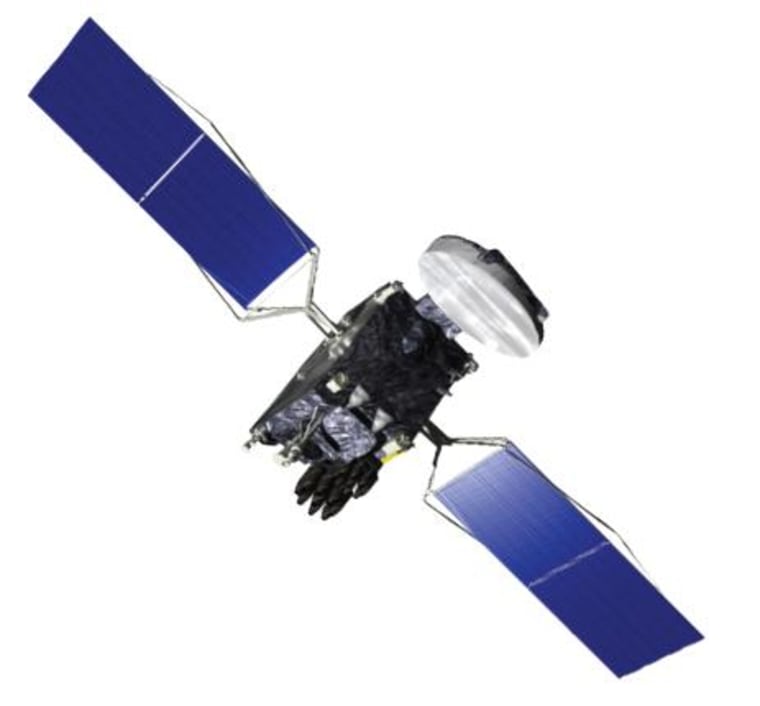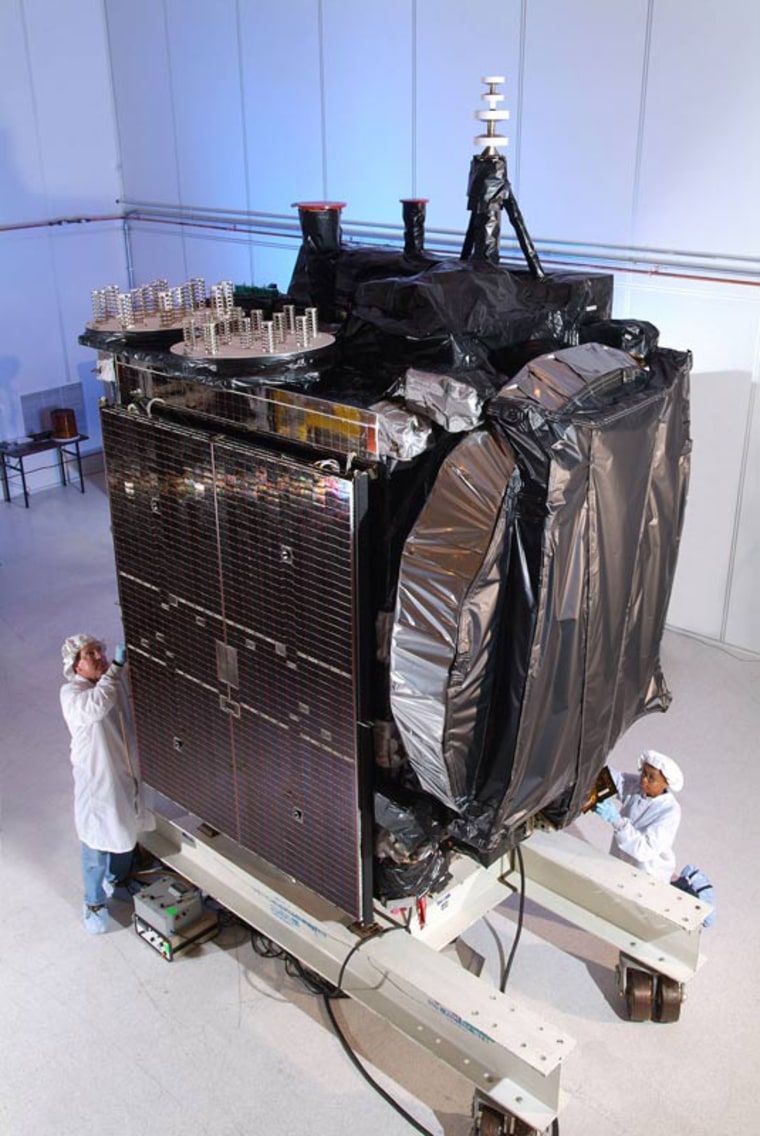It looks like the rogue zombie satellite Galaxy 15 may not threaten MTV and other cable television programming after all. The satellite operator with a spacecraft in Galaxy 15's cross-hairs announced plans Monday to send their satellite through a series of "intricate maneuvers" to avoid having its signal hijacked.
In the announcement, satellite operator SES World Skies reassured customers that it will move its AMC-11 satellite well clear of the approaching Galaxy 15 spacecraft to avoid service interruptions for customers.
The two satellites pose little risk of crashing into each other, but Galaxy 15's C-band communications package is stuck on and could siphon away signals meant for other spacecraft if it strays too close. The Intelsat-operated Galaxy 15 went rogue on April 5, apparently due to a solar storm, its Virginia-based builder Orbital Sciences Corp., has said.
Several attempts to shut down Galaxy 15 failed, leaving the so-called "zombiesat" adrift in space with an active electronic payload.
Since Galaxy 15 is now nearing AMC-11's orbital location at 131 degrees west, SES World Skies plans to maneuver its spacecraft to match the eastward drift of zombie satellite instead. That should maintain a minimum distance of separation between the two satellites.
This synchronized drift is designed to protect AMC-11 services from interference that could be caused by the wayward Galaxy 15.
AMC-11 is part of a fleet of communications satellite that beam cable programming across the United States, Canada, Caribbean and Mexico. They also relay HDTV programming for NBC, Discovery, Scripps, Comcast, MTV and iNDemand networks, according to an SES World Skies description.
The company will simultaneously move a new satellite, SES-1, to the opposite side of Galaxy 15, enabling some customers, including several cable television networks, to leapfrog their broadcasts over any potential interruption in service.
Customers will either be able to maintain services on AMC-11 during its repositioned drift, or re-point antennas to the new SES-1 in order to maintain the quality of their services.

For customers who stay on AMC-11 throughout the maneuver, their television programming will be delivered over a large, 19-meter antenna capable of minimizing potential disruptions.
SES World Skies expects to begin the synchronized eastward drift of AMC-11 on May 25, and estimates that the risk of interference will end on June 7, when the defunct Galaxy 15 exits the area located about 22,000 miles above the Earth's surface.
"This extraordinary technical initiative underscores our commitment to finding innovative solutions to minimize the impact of an unexpected event like this on our customers," said Alan Young, Chief Technology Officer for SES World Skies. "A team of our best engineers and scientists is working around the clock to ensure the success of this unprecedented mission."
Young noted that the company has been in regular contact with its customers in order to fully communicate how best to avoid disruptions in service.
